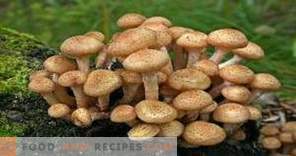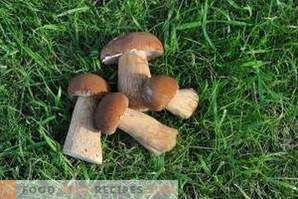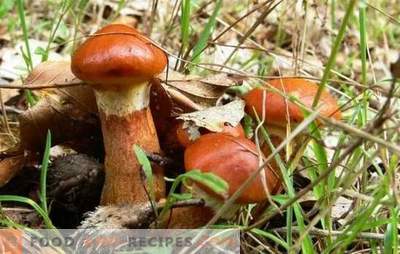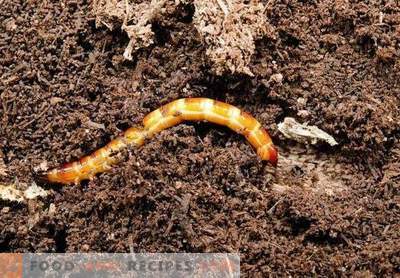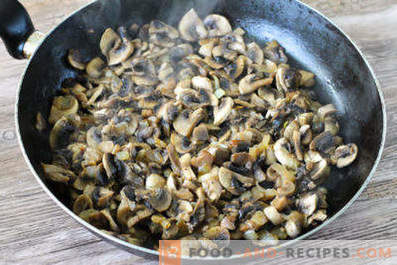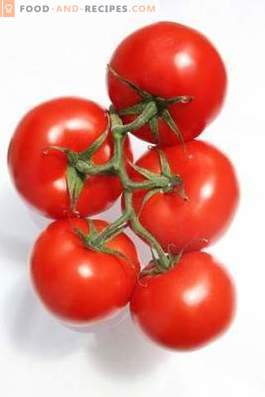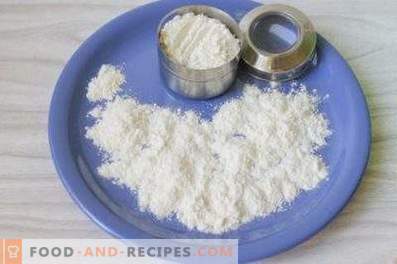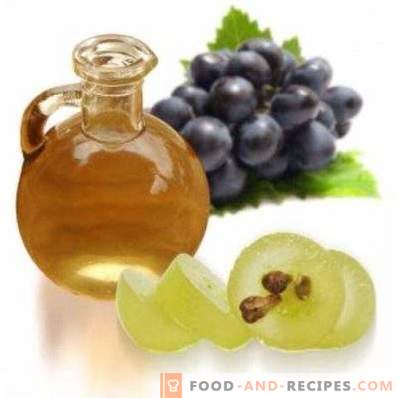
The lines, like the morels, are the very first mushrooms that appear in the forest after winter hibernation. They are often confused with each other, which is dangerous for health, as the lines, unlike morels, in their raw form are poisonous. Eating these mushrooms in food is possible only after the correct, in several stages, heat treatment. With the usual boiling or frying, there is a high probability of severe poisoning, which can even lead to death.
External differences line and morel
Morels belong to the group of edible mushrooms, and their cap resembles with its outlines a dark brown cone up to 8 cm high. Its entire surface is divided into cells of irregular shape and different size. The morel hat rests on a thin, graceful stem of almost the same length. The whole mushroom looks elongated upwards, as if it is heading for the sky.
The outlines line are directly opposite. He is always squat and stocky, as if he does not want to move away from the earth's surface. Often, its wide, wrinkled leg, resembling a yellowish-white or pinkish cylinder that expands downwards, is generally not visible from under the ground. Only a cap of irregular shape is selected on the surface, all in folds and convolutions. It is as if the suede surface resembles a walnut or human brain. The fruit body has a brown color, usually with a red or yellow shade, and in size reaches 10 cm in diameter.
Line types
The above is the description of the most common variety of lines - line of ordinary. Most often it can be found in coniferous forests. Especially like a line of pine forests, where selects places in the sun. He also likes to grow in clearings or recent fires. The first mushrooms in favorable weather conditions appear already in the second half of April. You can meet them until the very end of spring, and sometimes at the beginning of summer.
The giant lines have a strong external similarity with the ordinary line. Their only, but significant difference is in size. The fruit body of a giant stitch can grow up to 30 cm in diameter. In addition, his cap often has a lighter shade. This variety of lines prefers to grow in spruce or pine forests without undergrowth, where the soil warms well and there is enough sun. Just like morels, the giant species grows from the end of April.
The autumn lines, unlike their counterparts, appear only in July. It is present in both coniferous and deciduous forests. If the first two species grow only on the soil, then the autumn line often chooses rotting tree trunks as the place of residence. This mushroom is extremely poisonous, and it cannot be eaten even after thorough preparation according to all the rules. The appearance of the autumn line resembles a clown cap with two or three “horns” worn on a dirty white wand-leg. The color of the cap is usually saturated brown or almost black (in old mushrooms), and the surface resembles velvet in appearance.
Eating
If you do decide to collect and prepare the lines, you should know the correct technologies for their preparation, to minimize the effects of dangerous toxins - gyromitrins, contained in large amounts in raw mushrooms.
- The most common way of cooking mushrooms is to boil them. Boil lines should be in a large volume of water for at least 15 minutes. Then the water is drained and the mushrooms are thoroughly washed. After this procedure is repeated. Such a double cooking and washing removes most of the toxins and makes the lines suitable for any mushroom dishes.
- The second most effective way to “neutralize” lines is their long-term drying in the open air. The evaporating liquid takes with it most of the toxic substances. To make the mushrooms completely safe, they should be dried for at least six months.
- The first two methods do not allow to completely remove hiromitrins from mushrooms, therefore the danger of poisoning always remains. The only reliable way to make the lines edible is their aggressive drying. It is made in the oven at a temperature not lower than +55 ° C for a long time.
Danger of lines
The toxic nature of fungi does not completely disappear even after proper processing, therefore unpleasant consequences are always possible after they have been consumed.
- Even if there is no obvious poisoning, it is unlikely that carcinogens that always remain in the lines after boiling or drying will be beneficial to your body.
- Some people may have too low a threshold for sensitivity to hiromitrinam, and even small portions of toxins sometimes lead to dire consequences.
- In nature, sometimes strains of stitches are found from which it is impossible to completely remove toxins even after prolonged digestion or drying.
- It is strictly not recommended to use the lines for children, pregnant and lactating women, as well as people who have problems with the heart and blood vessels.
